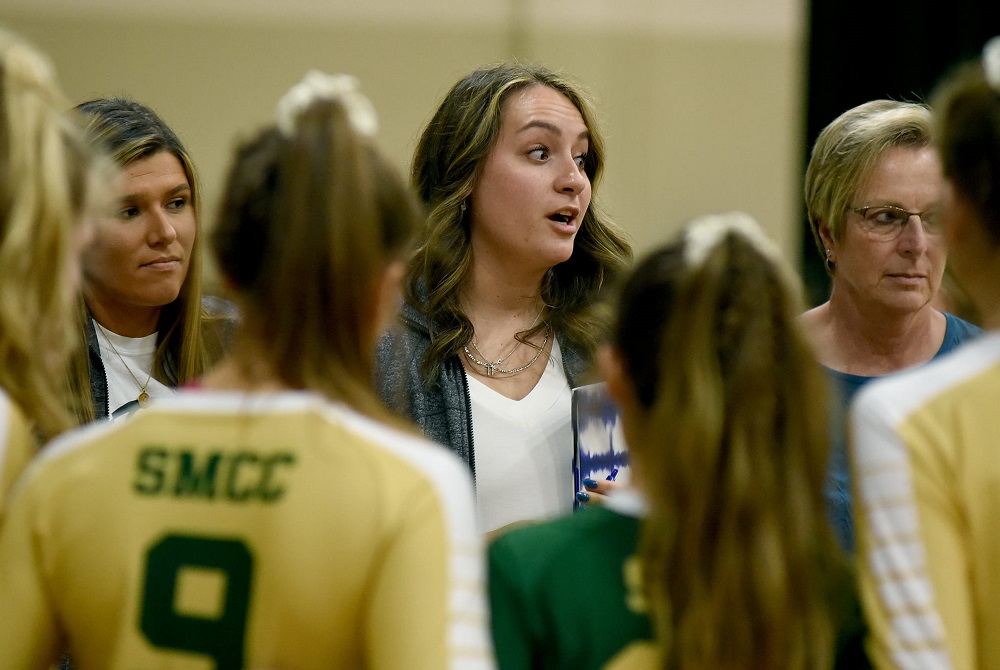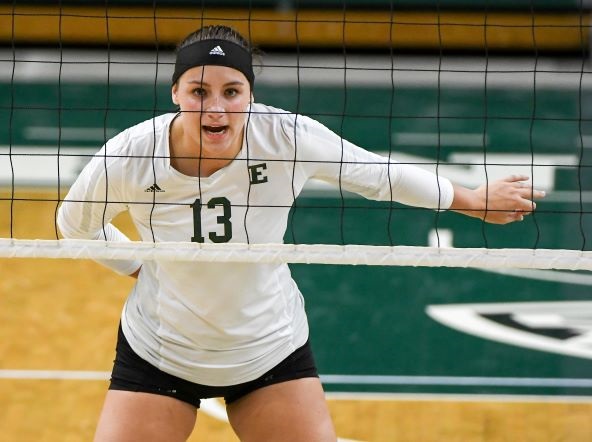
Working Through Transfer Trends
December 2, 2015
By Jack Roberts
MHSAA Executive Director
One of the responsibilities that schools have asked organizations like the MHSAA to execute is the management of transfer student eligibility. Historically, many associations have linked eligibility to residence ... thus, for some the regulation has been called the “Residency Rule” or “Transfer/Residency Rule,” not merely the “Transfer Rule.”
Over the years, as society became more mobile and families less stable, these rules became more and more complicated; and now, for most state high school associations, this is the regulation that consumes the most (or second) most pages of their handbooks. Over the years, this has also been the regulation most frequently challenged in court.
Over the years, some states have relaxed their transfer rule and others have refined their transfer rule. In either case, the transfer rule remains an imperfect rule, an imperfect net. Sometimes this net snags students who should not be made ineligible, and for those situations all associations have arranged some kind of waiver or appeal process.
And sometimes, and much less easily solved, the net fails to catch the situations it really should ... the transfers that are not hardship related or the result of some very compelling educational need, but those that are obviously for athletic reasons. It is those that we have been most focused on in Michigan.
Our first effort to get at the most problematic transfers was the adoption for the 1997-98 school year of what we called the “Athletic-MOTIVATED Transfer Rule” ... Regulation I, Section 9(E). Examples of an athletic-motivated transfer are included in the rule. The rule only applies to transfer students who do NOT meet any of the stated exceptions for immediate eligibility and are ineligible for one semester under our basic transfer rule. They become ineligible for 180 scheduled school days if there is a finding that the transfer was more for athletics than any other compelling reason.
This effort has not been successful enough because it requires a school that loses a student to another school to promptly allege to the MHSAA office, with supporting documentation, that the transfer was more for athletic reasons than any other compelling reason. The receiving school then must respond to those allegations. Then the executive director makes the decision. The unfortunate result of applying this rule is that it usually causes hard feelings between the schools, and hard feelings toward the executive director by the school decided against. In 17 years, schools have invoked this rule only 45 times.
Our more recent effort to address the most egregious athletic transfers resulted from requests from the coaches associations for wrestling and basketball, which were watching too many students change schools for athletic reasons, usually related to an out-of-season coaching relationship. The new rule – the “Athletic-RELATED Transfer Rule” – is Regulation I, Section 9(F). The difference between Section 9(E) and the newer Section 9(F) is that in 9(F) one school does not have to make and document allegations before staff can act. If MHSAA staff discover or are informed of any of the circumstances listed in 9(F), we can act. Again, the rule only applies to those transfer students whose circumstances do NOT meet one of the automatic exceptions. It applies only to students who are ineligible for a semester under the basic transfer rule. If there is a finding that one of the athletic related “links” exists (usually an out-of-season coaching relationship), then this transfer student who would be ineligible for one semester is made ineligible for 180 scheduled school days.
So far, it appears that 9(F) may be a better deterrent than 9(E). It has been referenced when students are rumored to be transferring, and it has stopped many of those transfers before they occur. We expect 9(F) to be an even better deterrent in 2015-16 because the rule has been broadened to apply to administrators and parents (not just coaches) and to address directing and coordinating athletic activities (not just coaching).
We have said that if this latest effort does not succeed in slowing athletic transfers, then the next step is 180 days of ineligibility – at least in any sport the student played in high school previously – for all transfer students who do not qualify for an exception that permits immediate play. I fear that would catch far too many students who should not be withheld so long from competition and could lead to a period like the early 1980s when the MHSAA, at the request of the state principals association, adopted the core of the transfer rule we have today and which resulted in a period of busiest litigation for the MHSAA when, at one time, the association had more than a dozen cases in court simultaneously on transfer matters. We’ve got to make the current rules work – with tweaks, perhaps; but not with radical revision.

2-Time Champ as Player, Haut Putting Further Imprint on SMCC as Coach
By
Doug Donnelly
Special for MHSAA.com
August 16, 2022
MONROE – After leading the Monroe St. Mary Catholic Central volleyball team into the Division 3 championship match last season, coach Cassie Haut had to apply for the Kestrels coaching job.
 That’s because when SMCC reached the Finals in 2021, Haut was officially the co-head coach with Karen O’Brien.
That’s because when SMCC reached the Finals in 2021, Haut was officially the co-head coach with Karen O’Brien.
“Oh, yeah, I had to go through the interview process and everything,” Haut said. “I met with the athletic director and other school officials. I was excited when I got the job.”
Haut certainly earned it.
SMCC officially billed Haut and O’Brien as co-head coaches when the 2021 season began. Haut was in charge of the team’s day-to-day activities and O’Brien – who led SMCC to Division 3 Finals titles in 2019 and 2020 – would help out as often as possible after being diagnosed with ovarian cancer for the fourth time.
O’Brien ended up being around the program often, including during the Kestrels’ postseason run.
When the season ended, however, O’Brien stepped aside, paving the way for a new coach to lead the ultra-successful SMCC program that has reached 10 Finals since 2003, and won seven of them.
Haut doesn’t feel added pressure as the next SMCC coach to maintain that level of success.
“I love it,” she said. “I’m honored to be able to be part of this legacy.”
Haut played basketball, softball and volleyball at SMCC and was part of two championship volleyball teams – in Class C in 2012 and 2014 – under head coach Diane Tuller. The 2015 SMCC grad also had an outstanding career at Eastern Michigan University, earning all-freshman team honors for the Mid-American Conference and twice being named first team all-MAC. In 2018 she was named the MAC Tournament MVP.
Soon after Haut’s college graduation, O’Brien – who was an SMCC assistant during Haut’s high school senior year – called her and asked if she wanted to be part of the program now as a coach.
“It was something that I always thought of doing,” Haut said. “After graduating, I remember thinking ‘What’s next?’ Coaching was something I felt I wanted to do. It helps keeps me part of the game that I love.”
SMCC graduated several seniors from the 2020 championship squad and had to do some rebuilding in 2021. O’Brien was there to put together some of the pieces, then helped mentor Haut as she guided the team through much of its 36-12 run. During the MHSAA Tournament run, O’Brien would funnel postgame questions to Haut, preferring to stay out of the limelight.
It was still, however, a dual coaching role until Haut took over the job.
“I was building up practice plans and ideas for the season just in case I was hired,” Haut said. “I had some things in my mind that I wanted to do. It’s nothing too crazy, but I just added my own touches.
 Last year, for example, it was O’Brien who organized summer practices and helped build the regular-season schedule.
Last year, for example, it was O’Brien who organized summer practices and helped build the regular-season schedule.
“I missed out on those parts of it, so it was something I was looking forward to this year,” Haut said. “It was exciting. We’re still in the same great tournaments that SMCC loves to go to.”
Haut is meshing the experiences she had as a player and coach to form her own coaching style and program.
“All of the coaches I’ve played for and coached with have a slightly different idea of the game,” she said. “The game has evolved in different ways. As I have gone through high school and college as a player, I felt like I learned more depth to the game every year. Then, since I’ve been coaching, I feel like it’s gone to another level.”
Before this season started, Haut had her players write down their goals.
“I want to learn everything I can about the girls,” she said. “It’s not just about volleyball, but life. My college coach really believed that. I’m excited to be part of these girls’ lives.”
Haut comes from an athletic family and has been around sports all her life.
Her father Chris played baseball at the University of Toledo. Her sister Mikayla was a four-time all-state volleyball player and Miss Volleyball finalist, and is coming off a Metro Atlantic Athletic Conference (MAAC) Rookie of the Year award at Fairfield University in Connecticut. Sister Maddie earned all-conference honors and helped Ave Maria University win its conference title a year ago. Brother CJ was an outstanding basketball player for the Air Force Academy.
SMCC is primed for more success this year. Haut welcomes back a solid senior group that has already showed off its leadership skills. The Kestrels will be among favorites as they seek to make a fourth-straight trip to Battle Creek.
“From the time we got into the gym, they have been leaders,” Haut said.
Two freshmen played key roles a year ago, McKenna Payne and Jessica Costlow. Payne rang up 465 kills, 360 digs and 86 aces during her ninth-grade season while Costlow had 414 kills, 275 digs and 59 blocks.
Last year, SMCC lost in the Division 3 Final to Reese. After taking a 2-0 lead in the match, the Kestrels dropped the final three games 25-15, 25-21, 16-14.
“I like a lot of what I saw in the scrimmage. It was good to get some different lineups together, and we have a deep bench,” Haut said. “I see a ton of potential with this team.”
 Doug Donnelly has served as a sports and news reporter and city editor over 25 years, writing for the Daily Chief-Union in Upper Sandusky, Ohio from 1992-1995, the Monroe Evening News from 1995-2012 and the Adrian Daily Telegram since 2013. He's also written a book on high school basketball in Monroe County and compiles record books for various schools in southeast Michigan. E-mail him at [email protected] with story ideas for Jackson, Washtenaw, Hillsdale, Lenawee and Monroe counties.
Doug Donnelly has served as a sports and news reporter and city editor over 25 years, writing for the Daily Chief-Union in Upper Sandusky, Ohio from 1992-1995, the Monroe Evening News from 1995-2012 and the Adrian Daily Telegram since 2013. He's also written a book on high school basketball in Monroe County and compiles record books for various schools in southeast Michigan. E-mail him at [email protected] with story ideas for Jackson, Washtenaw, Hillsdale, Lenawee and Monroe counties.
PHOTOS (Top) Cassie Haut, middle, talks with her Monroe St. Mary Catholic Central team last season as co-varsity coach with Karen O’Brien, right. (Middle) Haut signals to her teammates while starring at Eastern Michigan. (Top photo by Tom Hawley. Middle photo courtesy of the EMU athletic department.)

